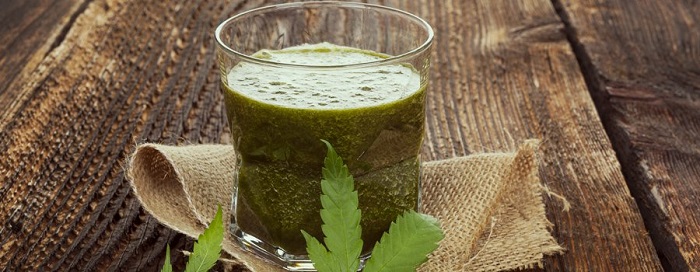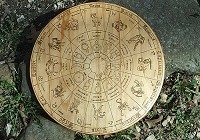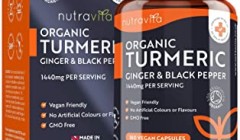
Regardless, a growing number of dedicated researchers continue to investigate new therapeutic applications for juicing or eating raw cannabis.
For some people, it remains difficult to distinguish between the plant's therapeutic and recreational uses. Inhaling the plant’s vapors gets you high, even when that isn’t the primary reason why it's being consumed. It’s not just anti-cannabis critics who have a problem with this issue. Many of the people who consume raw cannabis with a doctor’s recommendation have no interest in getting high. For them, the plant is a safe and natural method of relieving constant pain and constant discomfort, and it’s euphoric and thought-befuddling qualities are seen as (unwanted) side effects.
Research is now showing benefits of eating or juicing raw cannabis. One term that is regularly used in conjunction with cannabis is tetrahydrocannabinol (THC) — the ingredient in marijuana that produces the “high.” Cannabis does contain another beneficial chemical compound called cannabidiol (CBD) which has been proven medically to help relieve irritation, convulsions, nausea, as well as inhibit cancer cell growth.
Raw cannabis contains THCA and CBDA, ineffective alkaloids. They must be heated to produce THC and CBD, which in turn produces the "high." This is the reason for smoking or vaporizing. By eating or juicing raw cannabis in its natural state, there is no “high” to speak of. Drinking fresh-squeezed cannabis juice (similar to wheat grass juice) or eating raw cannabis as a leafy green vegetable is fast becoming a preferred means of consumption for individuals in search health benefits without losing their heads in the clouds.
I have not tried this but please let me know your thoughts on this as it is a very interesting topic gaining popularity for a wide variety of health-giving properties.
HOW DOES CBD INTERACT WITH THE BODY?
Human bodies contain an endocannabinoid system that helps regulate our bodily functions, such as sleep and pain. This system contains receptors known as CB1 and CB2, and CBD interacts with these receptors, reducing the absorption rate of naturally produced pain relievers such as anandamide within our bodies. This is important to note, because unlike opioids, CBD does not release dopamine, the neurotransmitter that causes our bodies to become dependent on the sensation that it provides, instead it prolongs the efficacy of our naturally produced pain relievers. Building a tolerance to CBD is rare, which means that a user will not have to increase the milligram dosage over time in order to maintain the pain relief qualities.
I would like to share with everyone an interesting and informative message I received from Jeffrey C. Raber, Ph.D. (thewercshop.com). Please read below:
When you consume "raw" cannabis, that is cannabis which has not been heated, you are consuming the cannabinoid acids. THCA and/or CBDA. If you have a strain that is dominant in CBD, then the raw form is delivering CBDA. If you have a high THC strain, then this raw form will deliver THCA. Look up tetrahydrocannabinolic acid, or cannabidiolic acid. Those are the A forms of the molecules you are consuming. Almost all varieties today contain large amounts of THCA which when heated provides THC. By volume (it is reported by weight actually), there is next to no CBDA or CBD in virtually all of the strains currently available. NOT ALL STRAINS ARE THE SAME! EVEN THE SAME NAMES ARE MOST OFTEN NOT THE SAME (misnamed, different grower = different method = different end product)! Over-generalization of this marvelous plant is what is diminishing its stock and ruining the value it has to offer. We've done thousands of strain tests and have in-house expertise directly from the Netherlands. We are the most informed laboratory of professional scientists in the US, you can rest assured my comments are correct.
Only about two percent of the strain products available today have CBD above one percent. It is RARE! And most likely almost none of it exists in non-medical states today.
Juicing is working because it provides the cannabinoid acids, which are potent compounds that help regulate the endocannabinoid system in ways not fully understood just yet. When you juice properly, you consume almost no THC or CBD, it is all THCA and CBDA! That is why you don't receive any psychoactive effects. Juicing improperly may lead to heating the solution and causing THC to form. The only way to know exactly what you have, strain or juice wise, is to have it tested by a reliable and accurate lab (and not all of the "labs" today operate in that faction either, unfortunately). Only through accurate information dissemination, more thorough understanding and improved patient care will we be able to fully free this marvelous plant! We all have to do our part! Dr. Courtney, who we maintain an excellent relationship with, is a true pioneer in the fashion and we should all aim to support him and his efforts in every way we can.
A Cannabinoid With Many Benefits
CBD is one of some 104 compounds classified as cannabinoids in cannabis plants, with as many as seven or eight more recently discovered compounds that may be considered cannabinoids. CBD is contained in both Cannabis Sativa (hemp) and Cannabis Indica (marijuana), but hemp has such a low CBD content, it is primarily grown for fiber and seed — uses we will discuss later.
It is not a surprise CBD has so many benefits since there is actually an endocannabinoid system in the human body and other mammals. It is part of our physiology. Cannabinoid receptors, which recognize and interact with CBD, are found in the human brain, lungs, liver, kidneys and immune system.
There are myriad medical uses attributed to CBD, and the list keeps growing. Here are some uses that have recently been scientifically documented.
|
Allergic asthma — "CBD treatment decreased the inflammatory and remodeling processes in the model of allergic asthma," according to the European Journal of Pharmacology |
|
Anxiety and sleep — "Cannabidiol may hold benefit for anxiety-related disorders," The Permanente Journal |
|
Autism spectrum disorders (ASD) — "Cannabis in ASD patients appears to be [a] well tolerated, safe and effective option to relieve symptoms associated with ASD," Scientific Reports |
|
Blood pressure — "This data shows that acute administration of CBD reduces resting BP and the BP increase to stress in humans," JCI Insight |
|
Cancer pain, nausea and lack of appetite — "The National Cancer Institute (NCI) currently recognizes medicinal C. sativa as an effective treatment for providing relief in a number of symptoms associated with cancer, including pain, loss of appetite, nausea and vomiting, and anxiety," BioMed Research International |
|
Cancer/tumors — "Cannabidiol (CBD), one of the compounds present in the marijuana plant, has antitumor properties," Cancer Letters |
|
Diabetes — "These results suggest that the neuroprotective effects of CBD in middle-aged diabetic rats ... are related to a reduction in neuroinflammation," Neurotoxicity Research |
|
Epilepsy — "CBD is a well-tolerated and effective antiseizure agent and illustrates a potential disease-modifying effect of CBD on reducing both seizure burden and associated comorbidities well after the onset of symptomatic seizures," Epilepsia |
|
Inflammation — "CBD that exerts prolonged immunosuppression ... might be used in chronic inflammation, the terpenoids ... might thus be used to relieve acute inflammation," Cannabis and Cannabinoid Research |
|
Irritable bowel diseases — "Clinical trials suggest that there may be a therapeutic role for cannabinoid therapy in the treatment of IBD," Current Gastroenterology Reports |
|
Multiple Sclerosis — "As cannabis legalization has impacted the variety of cannabis products available, there appears to be growing numbers ... using cannabis ... reporting use of highly efficacious products with minimal side-effects," Multiple Sclerosis and Related Disorders Neurodegenerative and cardiovascular diseases — "CBD has been found to possess antioxidant activity in many studies, thus suggesting a possible role in the prevention of both neurodegenerative and cardiovascular diseases," BioMed Research International |
|
Ovarian function/female reproductive system — Impacts "the female reproductive system where it affects folliculogenesis, oocyte maturation and ovarian endocrine secretion," Journal of Ovarian Research PTSD and nightmares — "Administration of oral CBD in addition to routine psychiatric care was associated with PTSD symptom reduction ... CBD also appeared to offer relief in a subset of patients who reported frequent nightmares as a symptom of their PTSD," Journal of Alternative and Complementary Medicine |
|
Pain, migraine, detoxification from opioids — "There is accumulating evidence for various therapeutic benefits of cannabis/cannabinoids, especially in the treatment of pain, which may also apply to the treatment of migraine and headache. There is also supporting evidence that cannabis may assist in opioid detoxification and weaning, thus making it a potential weapon in battling the opioid epidemic," Headache |
|
Parkinson's and Alzheimer's diseases — "CBD may be effective in the "treatment of five syndromes, currently labeled recalcitrant to therapeutic success, and wherein improved pharmacological intervention is required: intractable epilepsy, brain tumors, Parkinson's disease (PD), Alzheimer's disease (AD) and traumatic brain injury," Frontiers in Integrative Neuroscience |
|
Pediatric seizures — "The efficacy and safety profile of CBDV suggest it may have therapeutic value for early life seizures," Neuropharmacology |









